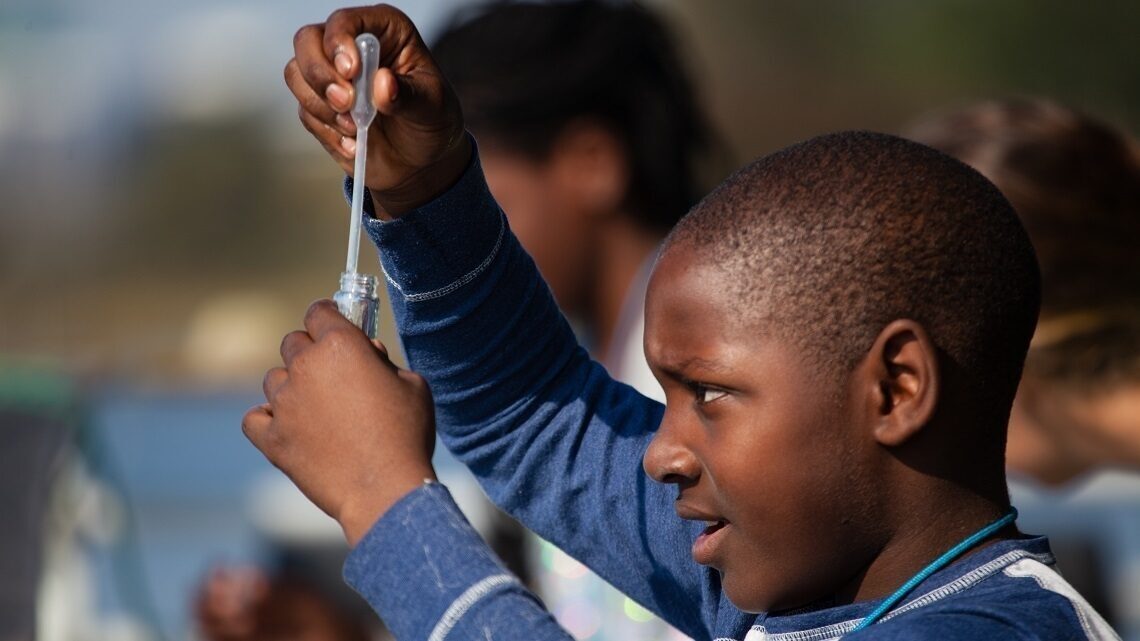Community Science

Collecting data and making observations is how we learn about our environment. Community science (aka citizen science, crowdsourced science, volunteer monitoring) engages the wider community in collecting data using a shared protocol that can help scientists make conclusions and/or take action.
There is a huge diversity of community science projects. Some projects focus on a group of organisms like birds or macroinvertebrates. Others look into human impacts like recording climate change and marine debris or focus on changes like recording migration and seasons. You can even find projects that live completely online in which participants review satellite images or wildlife cameras. Community science can occur anywhere, including the schoolyard as part of outdoor learning.
Participating in community science can be a form of environmental action because it can inform further action like habitat protection or restoration, engage and educate the community on their local environment, and monitor the success of past actions.
Connecting to Issue Investigation
Community science can inform investigations and be a component of investigations. To answer questions, students contribute to projects by collecting data and observations and analyzing the shared community data. Investigation may reveal that more information is needed and this discovery in turn can lead to a solution of establishing a new data collection project.
For those working towards green school awards, this action can help advance environmental and sustainability education by getting students and others involved in collecting data.
Facilitating Student Action
Students should continue to have opportunities to share ideas and opinions throughout the process of identifying, planning, and implementing action. Listed here are just a few ways students can stay engaged while working on this solution—but there are many more! The complexity of each activity/task can be adjusted for each grade level.
Protect - community science data can be used as evidence for protecting habitat of a species students investigate.
Restore - data can show the need for restoration, for example, students discover a large population of invasive species or the absence of species that should be found in a particular habitat.
Create - data can be used to inform the creation of a habitat. Students can learn what is and isn’t present and choose habitat features to support desired species. If a habitat creation is planned, monitoring before and after installation can show the project’s success.
Educate - community science can be a great way to engage and educate others on a school’s or community’s habitats. Students can also use their data to educate others on the community’s environmental health.
Advocate - data from community science projects can be used to advocate for protecting, restoring, or creating a new habitat.
Share and Celebrate - students can share their work with the school community by giving tours of their study site, providing presentations, creating displays, or writing and delivering morning announcements. Students can also write articles, press releases or invite reporters from the school paper and the local newspaper.
Community Science Resources
SciStarter is a great place to start if you are thinking about joining a community science project. Use its project finder to filter by project location, keyword or topic. Citizen Science also has a bunch of projects that all support a federal agency’s work.
There are many specialized community science projects but if you are looking for something more general that allows you to record just about everything you see out your window, in the schoolyard or at the park, check out these easy to use projects: iNaturalist, Project Noah, and Nature’s Notebook. Nature’s Notebook is best designed to focus on a single location where you keep adding plants and animals observed at that location. iNaturalist and Project Noah are best if you are unsure of your identification because you can ask the community of online users to help you identify species in your photos.
Choose your own Citizen Science Project from California Academy of Sciences is a lesson for guiding middle to high school students through the process of discovering, choosing, and participating in a project.
